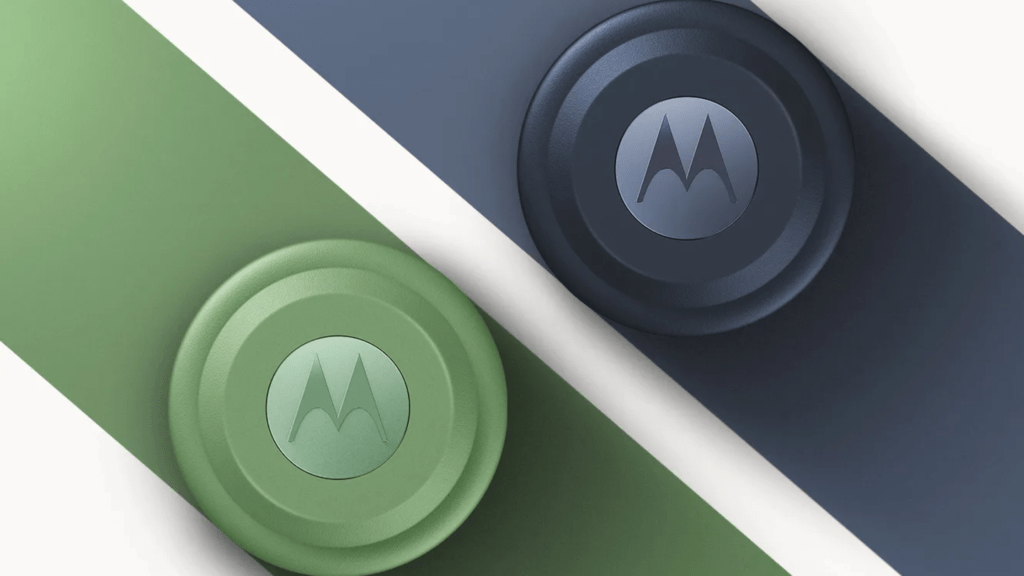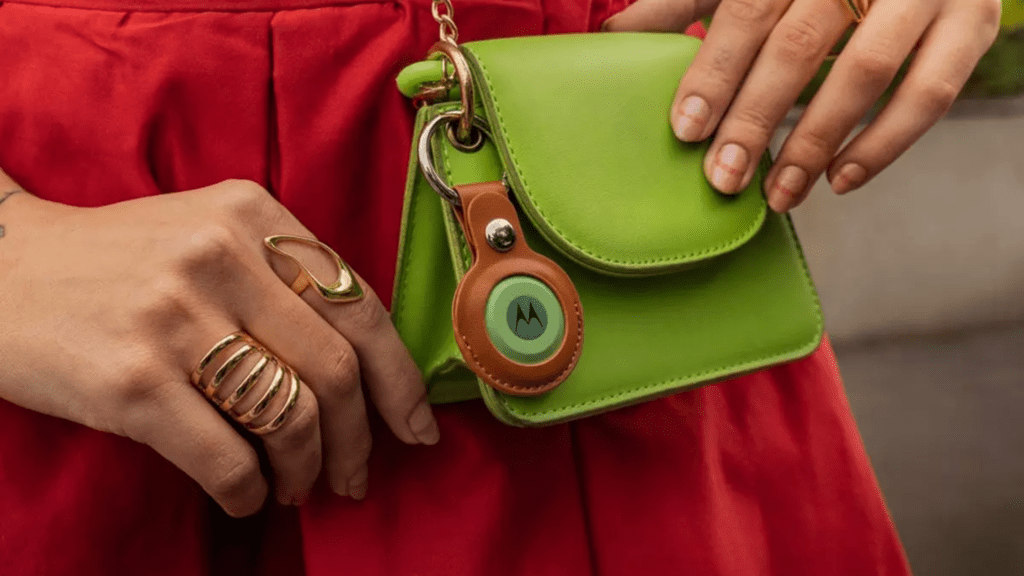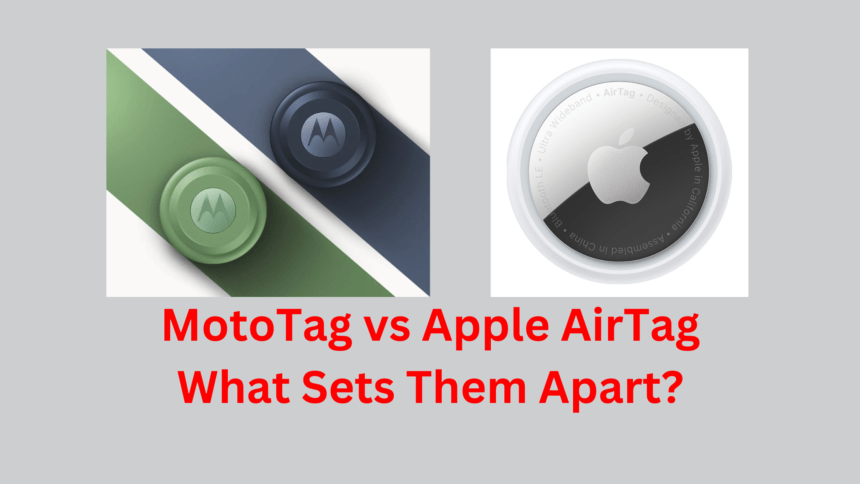In today’s fast-paced technological landscape, the demand for effective and reliable location tracking devices has grown significantly. Motorola’s recent introduction of the MotoTag and Apple’s well-established AirTag have garnered considerable interest among consumers seeking top-tier tracking solutions. This article delves deep into the key differences and similarities between Motorola’s MotoTag and Apple’s AirTag, offering insights into their designs, technologies, user experiences, and more.
What is MotoTag?
Motorola’s MotoTag represents a significant leap into the smart tracking device market. Powered by Ultra-Wideband (UWB) technology, MotoTag promises unparalleled accuracy in tracking items. Its design combines durability with aesthetics, ensuring it can withstand daily use while appealing to those who value both style and functionality.
What is Apple AirTag?
Apple AirTag, in contrast, embodies Apple’s trademark blend of simplicity and innovation. It utilizes Bluetooth and UWB technologies to offer seamless connectivity and precision tracking within Apple’s ecosystem. AirTag’s sleek design and integration with iOS devices underscore its appeal to users who prioritize a seamless user experience and aesthetic harmony.
Design and Build Quality
The design and build quality of MotoTag emphasize durability and practicality. Crafted with robust materials, MotoTag is designed to withstand wear and tear while maintaining a sleek appearance. Its intuitive design ensures ease of use, making it a practical choice for users looking for a reliable tracking companion.
On the other hand, Apple AirTag’s design philosophy focuses on minimalism and integration. The device’s compact form and premium build materials reflect Apple’s commitment to sleek aesthetics and user-friendly design. While both MotoTag and AirTag prioritize durability and style, their design choices cater to different consumer preferences, emphasizing personal taste and practical utility.
Technology and Connectivity
Technologically, MotoTag stands out with its integration of UWB technology. This advanced feature enables MotoTag to pinpoint the exact location of tracked items with unprecedented accuracy. UWB technology not only enhances tracking precision but also sets MotoTag apart as a cutting-edge solution in the smart tracking device market.
Apple AirTag, meanwhile, leverages both Bluetooth and UWB technologies for connectivity and tracking capabilities. Bluetooth ensures broad compatibility with iOS devices, while UWB enhances spatial awareness and precision in tracking. This dual-technology approach enhances AirTag’s versatility, catering to diverse user needs within the Apple ecosystem.
Compatibility and Ecosystem
MotoTag is designed to seamlessly integrate with Motorola devices and the broader Android ecosystem. Its compatibility with Android platforms enhances its appeal, offering users flexibility in device compatibility and ecosystem integration. MotoTag users can leverage Motorola’s ecosystem for enhanced functionality and seamless connectivity.
Conversely, Apple AirTag is tailored for integration within Apple’s ecosystem, ensuring effortless pairing and synchronization with iOS devices. The device’s compatibility with Apple’s Find My app enhances its utility, providing users with a unified platform for managing and tracking their belongings. AirTag’s ecosystem-centric design and integration highlight its appeal to users invested in the Apple ecosystem.

Battery Life and Maintenance
Battery life is a critical consideration for users of tracking devices like MotoTag and AirTag. MotoTag offers impressive battery performance, with efficient power management ensuring long-lasting operation. Its low-energy consumption and optimized battery design minimize the need for frequent recharging, enhancing user convenience and reliability.
Similarly, Apple AirTag boasts efficient battery management, providing extended operational lifespan on a single battery. The device’s adaptive energy usage and low-power design optimize battery performance, reducing the hassle of frequent battery replacements. Both MotoTag and AirTag exemplify advancements in battery technology, catering to users seeking reliable tracking solutions with minimal maintenance requirements.
Privacy and Security
Privacy and security are paramount in the smart tracking device market, influencing user trust and adoption. MotoTag integrates robust data encryption protocols and privacy controls to safeguard user information and tracked data. Motorola’s commitment to data security ensures user confidence in MotoTag’s handling of sensitive information, addressing privacy concerns associated with smart tracking technologies.
Similarly, Apple AirTag prioritizes user privacy through stringent data encryption and privacy features embedded within its ecosystem. The device adheres to Apple’s privacy policies, ensuring secure data transmission and storage to protect user identities and tracking information. AirTag’s implementation of privacy safeguards underscores Apple’s commitment to maintaining user trust and privacy integrity, distinguishing it as a reliable choice for privacy-conscious consumers.
User Experience and Features
User experience is pivotal in assessing the appeal of MotoTag and AirTag. MotoTag offers a user-centric interface with intuitive controls and customizable settings, catering to individual preferences and tracking needs. Its seamless integration with Motorola devices and Android ecosystem enhances user convenience, facilitating effortless management and monitoring of tracked items.
In contrast, Apple AirTag excels in user experience with a streamlined interface and intuitive functionality optimized for iOS devices. The device’s integration with Apple’s Find My app enhances usability, providing users with real-time tracking updates and location notifications. AirTag’s user-centric features, such as Precision Finding and Lost Mode, further elevate its appeal by offering practical solutions for locating misplaced items within the Apple ecosystem.
Price and Value Proposition
The pricing strategy and value proposition of MotoTag and AirTag influence consumer decisions, balancing affordability with functional benefits. MotoTag offers competitive pricing relative to its advanced features and technological capabilities, providing value for money compared to other tracking devices in the market. Its cost-effective pricing appeals to budget-conscious consumers seeking reliable tracking solutions without compromising quality or performance.
Conversely, Apple AirTag’s pricing reflects its premium positioning within the smart tracking device market, aligning with Apple’s brand reputation for quality and innovation. The device’s value proposition lies in its seamless integration with Apple’s ecosystem, offering users a cohesive tracking experience characterized by simplicity and reliability. While AirTag’s premium pricing may deter budget-conscious consumers, its comprehensive feature set and ecosystem integration justify the investment for Apple enthusiasts and tech aficionados alike.

Conclusion
In conclusion, Motorola’s MotoTag and Apple’s AirTag represent leading contenders in the smart tracking device market, each offering unique features, design philosophies, and ecosystem integrations tailored to diverse consumer preferences. Whether prioritizing precision tracking capabilities, ecosystem compatibility, or privacy considerations, prospective users can choose between MotoTag and AirTag based on their individual needs and technological preferences. As advancements in smart tracking technology continue to evolve, MotoTag and AirTag exemplify innovation and functionality, setting new benchmarks for reliability, usability, and user-centric design in the digital age.
For more content follow Humstory













